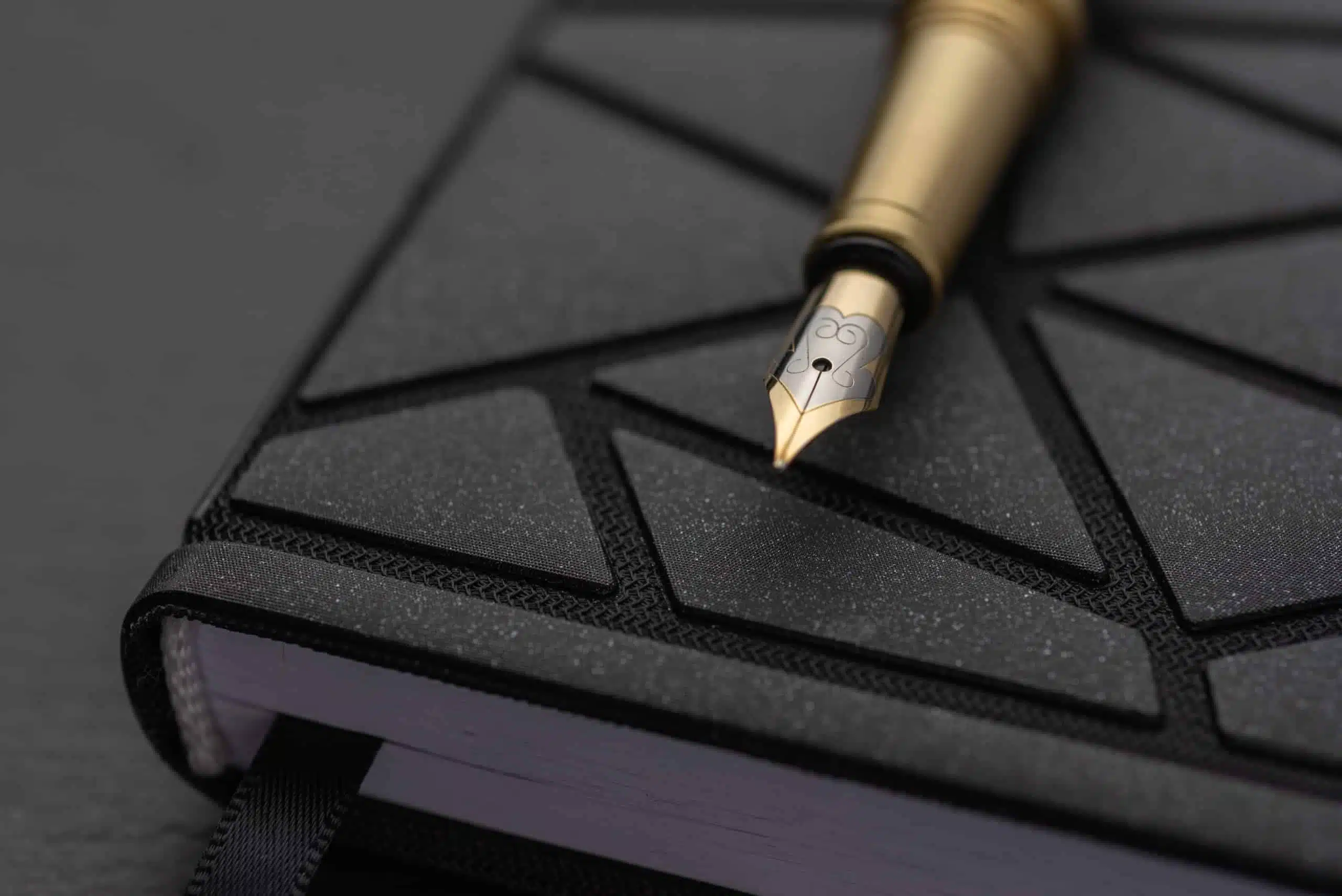Here’s what the Cro Cumaisc Etir Casbairdni Ocus Lethrannaigecht poetry form is:
Cro cumaisc etir casbairdni ocus lethrannaigecht is an Irish verse form based on rhymed quatrains.
Despite the intimidating name, it’s a relatively simple form utilizing a syllable structure of 7/5/7/5 with a rhyme scheme of ABAB.
Additional restrictions are placed on the length of the last words in each line.
So if you want to learn all about the Cro Cumaisc Etir Casbairdni Ocus Lethrannaigecht poetry type, then you’ve come to the right place.
Let’s delve into it!
- Séadna Poetry Form: Shape Grandeur in Words
- Rionnaird Poetry Form: Express Intense Emotions
- Deachnadh Mor Poetry Form: Infuse Light in Lines
- Deachnadh Cummaisc Poetry Form: Open Minds Wide
- Droighneach Poetry Form: Test Your Poetic Skills
- Breccbairdne Poetry Form: Express Authenticity
- Ae Fraeslighe Poetry Form: Radiate Eire’s Beauty

Forms of Poetry: Cro Cumaisc Etir Casbairdni Ocus Lethrannaigecht

Cro cumaisc etir casbairdni ocus lethrannaigecht, which I will henceforth refer to as the CCECOL because the length of the name is a war crime, is an Irish verse form consisting of quatrains with an ABAB rhyme scheme.
Despite the intimidating name, this is actually not an incredibly complex poem form.
The CCECOL is unique in its execution to the extent that the syllable counts complicate the form a bit, but I would otherwise argue that this is one of the easiest of all Irish verse forms.
The definitions in my sources seem to trace back to Robin Skelton’s The Shapes of Our Singing, at least as far as I can tell.
While this goes for all rare poem foreign poem forms, it should be noted that there may be some inconsistencies because of the small number of sources available that reference this form.
I generally make an effort to cross-reference when possible, but many of the sources available online are ultimately quoting and paraphrasing each other so Skelton’s book is the closest thing to a primary source that I can name in this instance.
Basic Properties of Cro Cumaisc Etir Casbairdni Ocus Lethrannaigecht

| Rhyme Structure | Yes |
| Meter | No |
| Origin | Irish oral traditions |
| Popularity | Rare |
| Theme | Varies |
How Is Cro Cumaisc Etir Casbairdni Ocus Lethrannaigecht Structured?

The form-who-must-not-be-named is comprised of quatrains with both alternating rhyme and length.
There is a rhymes scheme of ABAB with a syllable structure of 7/5/7/5. By design, this means that the lines ending in sound B are the shorter lines.
Additionally, lines one and three end with a three-syllable word and lines two and four end with a one-syllable word, chiefly to make your life more difficult.
In all seriousness, it does add a bit of charm and challenge to the poem form, since writing an ABAB quatrain without these restrictions would be laughably easy.
The end result will sound remarkably similar to a ballad, another poem form often used for narrative poems.
As such, using the form as the basis for a narrative poem may feel natural to experienced poets.
Keep in mind that the structure actually defines each verse, rather than the whole poem.
A poem written in CCECOL is not necessarily one quatrain.
It can be two or ten or fifty quatrains long. This is a unique quirk of Celtic poem forms.
Example of the Cro Cumaisc Etir Casbairdni Ocus Lethrannaigecht

Beneath the Rainbow
Beneath the rainbow’s shimmering
I thought I did see
just the faintest glimmering
of gold coins for me.
A snake closely slithering
to where it would be
left me poor and simmering.
Those coins remain free.
The above example of CCECOL verse hits all the right notes.
Each verse is four lines with the expected rhyme scheme.
While the poem does use a lot of triple rhyme, it should be noted that only the last syllable of the three-syllable words actually needs to rhyme, technically.
Triple rhymes were only used as a stylistic choice.
One nice quality of the seven-syllable lines is that it’s really just writing a four-syllable line plus one three-syllable word.
As such, it may be easier to write those lines if you think about what word you’ll use at the end of the line and then work backward.
Tips for Writing in Cro Cumaisc Etir Casbairdni Ocus Lethrannaigecht

As with all rhyming poems, try to utilize easily rhymed endings.
This might mean finding common suffixes to fall back on (like -ation) or it may mean purposely utilizing words that end in a vowel sound since those tend to be easy to rhyme with.
On the first and third lines, adding a double or triple rhyme at the end can be a nice stylistic touch.
As mentioned above it isn’t necessary, but it is very much in line with the style of Irish poetry, which often prioritizes the pleasantry of sound.
If not, then you may want to consider words that end in ‘y’ or ‘n.’
Three-syllable words ending in those letters tend to be easier to rhyme by nature of the suffixes associated with them.
Generally speaking, you won’t find the line lengths to be much of an issue.

Five syllables are essentially the minimum length a rhymed line can be before it starts to get uncomfortable, but it’s still perfectly doable.
The odd number of syllables may throw you off if you’re used to writing English formal poetry (which often defaults to Iambic meter) but you’ll get used to it quickly.
Make mental notes of what words and types of words are good for filling in gaps when you just happen to be missing a certain number of syllables.
Adverbs and adjectives, for example, tend to be great for squeezing out those last few syllables you need to fill out the line.
Lastly, give up on ever pronouncing the full name of the form correctly.
Sure, you could probably find out how to say it by whispering the right questions to a Ouija board, but is it really worth incurring a spiritual debt for?
Poet’s Note

If you ever want to sound like you worked really hard for someone, tell them you wrote a cro cumaisc etir casbairdni ocus lethrannaigecht for them.
They will either believe you instinctively or hold up a cross, thinking you to be speaking in tongues at them.
Since both options are funny, you win either way.
Comprehensive Collection of Poetry Forms: Craft Words Into Art

Dare to traverse the entire spectrum of poetic forms, from the commonplace to the extraordinary?
Venture from the quintessential Sonnet to the elusive Mistress Bradstreet stanza, right through to the daunting complexity of Cro Cumaisc Etir Casbairdni Ocus Lethrannaigecht.
For those with a zeal to encounter the full breadth of poetry’s forms, this invitation is yours.
Start exploring the vast universe of poetic ingenuity with our comprehensive array of poetry forms right now!
- Séadna Poetry Form: Shape Grandeur in Words
- Rionnaird Poetry Form: Express Intense Emotions
- Deachnadh Mor Poetry Form: Infuse Light in Lines
- Deachnadh Cummaisc Poetry Form: Open Minds Wide
- Droighneach Poetry Form: Test Your Poetic Skills
- Breccbairdne Poetry Form: Express Authenticity
- Ae Fraeslighe Poetry Form: Radiate Eire’s Beauty
